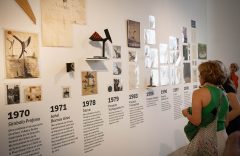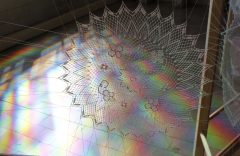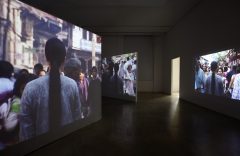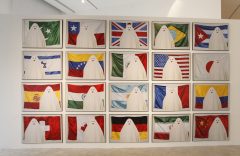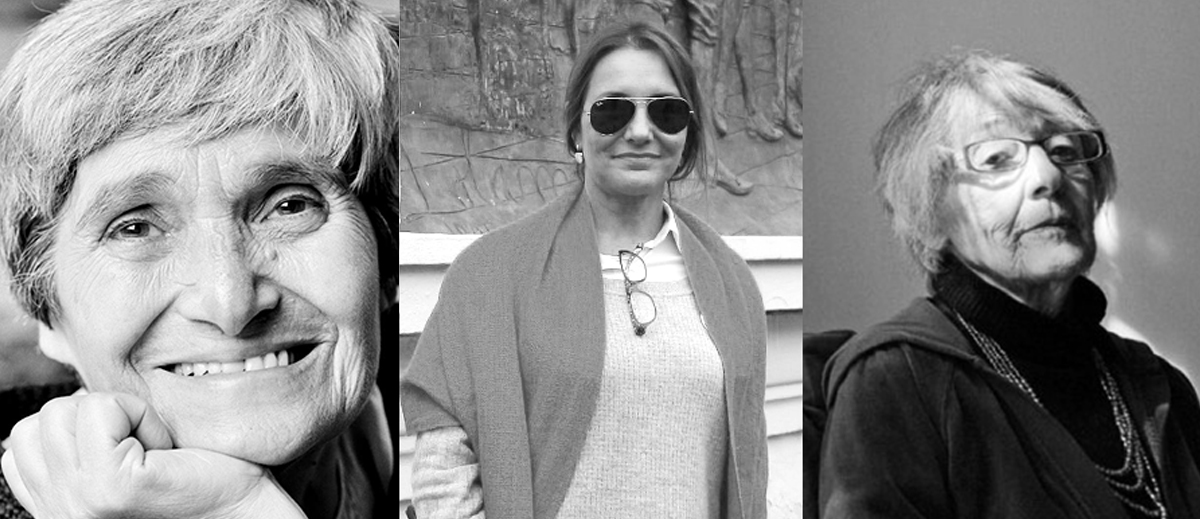
With different thematic and aesthetic approaches, Maria Lai’s exhibitions are added to its halls.
Julia Toro and Carlota Beltrame.
The productions of the Italian Maria Lai, the Chilean Julia Toro and the Argentinean Carlota Beltrame nourish the new exhibitions of the MUNTREF Contemporary Art Center (CAC) in line with its proposal to display the works of distinguished women artists contributing to the gender equality in the field of art.
The diaries of the soul, the exhibition dedicated to Maria Lai (1919-2013), focuses on her work during the 1960s, a hinge period in the trajectory of this reference point of relational art.
The exhibition includes a selection of her famous Looms, Sewn Fairy Tales, The Sewn Books and Geographies, where the Italian creator gets involved with everyday materials, the Sardinian folktales, intimate readings and an inquiry into other possible worlds and cosmogonies.
For her part, Julia Toro exhibits three types of pieces in The Photographic State (El estado fotográfico): her photographs and those that portray the Chilean artistic and intellectual community in the eighties. Toro is the author of the most outstanding portraits of the Chilean artistic movement amidst the Pinochet dictatorship, with memorable captures of faces and performances in which
figures such as Diamela Eltit, Pedro Lemebel, Jorge Teillier and Raúl Zurita participated.
Finally, Carlota Beltrame in Collective Memory ( Memoria Colectiva) presents a tribute to the province of Tucuman. Using various media such as stone carving, laser engraving, textiles, sound and light, the artist from Tucumán proposes a rescue of memory appealing to diverse objects and local personalities, from randa (a traditional lace) and the “vanilla” model tiles that cover the paths, up to the name of Hilda Guerrero de Molina (a woman who resisted the
dictatorships of Eduardo Lonardi and Juan Carlos Onganía). With a poetic and political outlook, the Beltrame’s exhibition captures both the crafts and customs of the people of Tucumán and their struggles and resistances.
News

